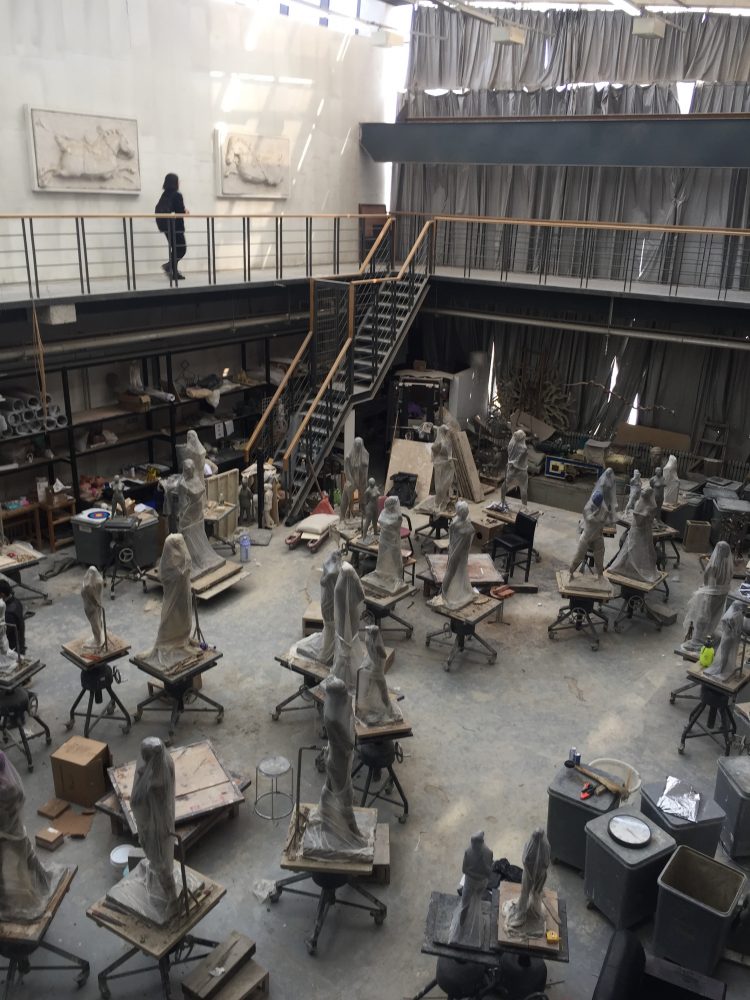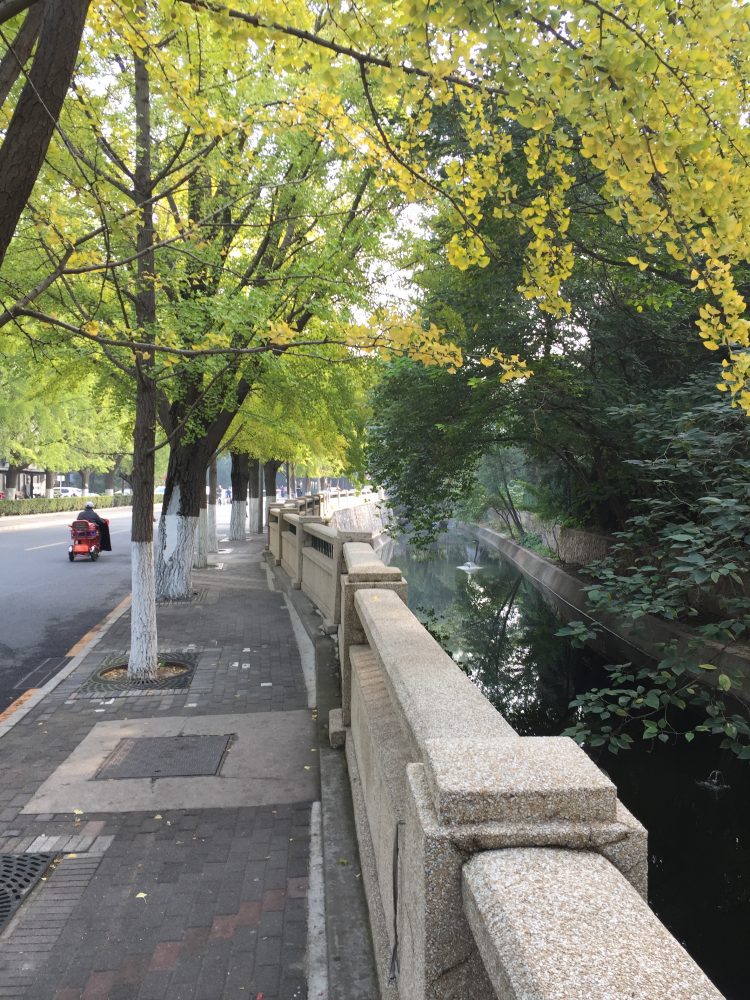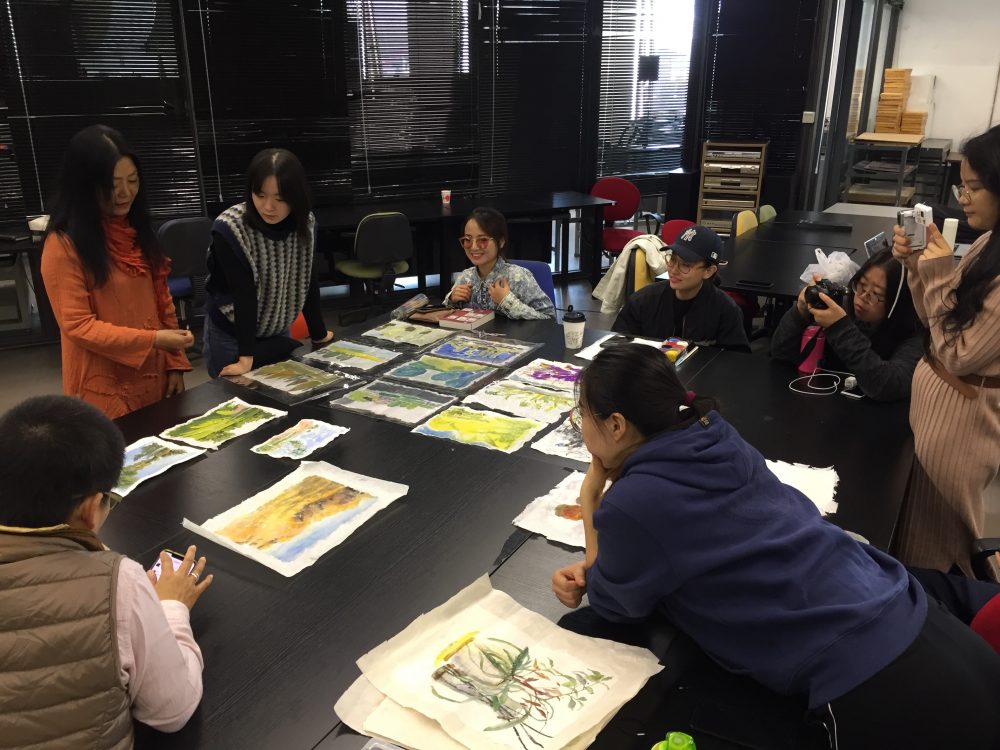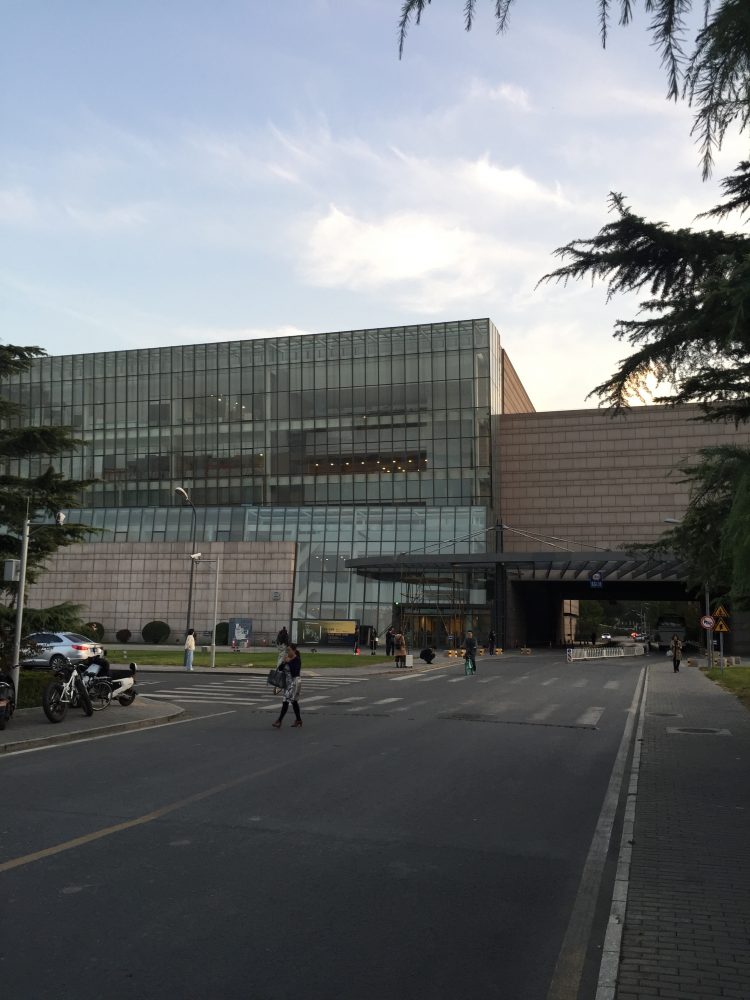Paper making
Mark de Weijer is a painter as well as a papermaker. The fascination for papermaking comes mainly from the craft aspect and the possibilities and inspiration it gives to the artistic process. In October 2019 he gave a workshop papermaking and pulp painting to students of Tsinghua University Beijing China.

Reason
In the summer of 2017, I was on a tour of China with my family. One of the travel destinations was the papermaking village of Shiqiao. A special, historic place in the mountains of southwest China where paper was made in the traditional way. Entire families once lived from the craft. There was only one street left. We also noticed a new centre just outside the village. A building project initiated by the government to get tourism going in that direction. When we arrived the employees reacted surprised. None of them spoke English. Fortunately there were other visitors including a retired teacher who had previously worked in Oxford. This man, Chen Jianming, was travelling with his sister-in-law Yuan Bo to various papermaking villages in China. Yuan Bo works as a professor at the Department of Arts and Design of Tsinghua University in Beijing. She has set up a foundation with the aim of making an inventory of the traditional craft of papermaking in China, and where possible to revitalize it by linking it to contemporary design and art. The contact became more cordial by the day, work was shown to each other and knowledge was shared. At the farewell the participants promised to stay in touch.
When we arrived, the employees present reacted with shock and surprise. None of them spoke English.

Invitation
A year later I received the invitation to be a guest lecturer at Tsinghua University to give a workshop to students of the design and painting department. What a wonderful opportunity to be able to go back. And also so exciting, as a Dutchman in China, the cradle of papermaking, to be allowed to teach in that very field.
The theme offered me a steppingstone to point out very specific cultural-artistic differences between East and West.
I decided to take the theme of landscape as my starting point. The theme offered me a stepping stone to point out very specific cultural-artistic differences between East and West. But also to show the similarities. Of course the different techniques were also discussed. I was asked to work out the workshop from day to day. The start would be a presentation for the students with an overview of contemporary paper art, the theme landscape and my own work. After that there would be four days of work, a weekend with excursions, another three days of workshops and a final day of evaluation and presentation of the work.

Stay
At arrival at the airport of Beijing we, my wife Annechien was with us, were warmly welcomed by Yuan Bo and her assistant. Then we drove to the university campus.
In our guest apartment, we went over the program. Then we met up with two other assistants for the afternoon for a walk around the campus. The walk was impressive. The campus appeared to be a small city in a metropolis. Our apartment was in a block where mostly staff live with their families. There were several small neighborhoods with residential blocks but also detached houses. Spacious parks and squares with art in the public space.

Presentation
The next morning we had our first walk from the apartment to the Academy. We walked past a traditional main gate, the old entrance to campus, under a long row of Ginkgo trees, flanked by a drainage from which a worker was fishing autumn leaves with a scoop net. All the time. Once we arrived at the department, everything was ready, even the students were waiting expectantly for the start.
After a short introduction by Professor Yuan Bo and introduction to the interpreter present, I handed out the inevitable presents. Hilarity and big thanks, great start. One student caught my eye; she had good questions and comments. After the break we went to the PaperlabTwo floors down, where we would work for the rest of the time. To my luck I found the attentive student there; she turned out to be the workplace manager. She was working on her Phd, with another professor. With this man she had the Paperlab help set up. Ideally, she spoke good English and was very helpful and caring. In any case, we had nothing to complain about at this point; we were constantly at our beck and call as far as pampering.
So everything is ready for the start the next morning, but first we have dinner together. Also a daily recurring ritual, very relaxing and very tasty.
The Paperlab was not large, but well equipped. Among others a powerful Hollander (pulp grinder) was available. Enough scooping bins, one of which was very large and came in handy later. We also had a drying table which was very useful. Professor Yuan Bo had bought the necessary raw materials and tools on the basis of my wish-list, they had not looked at the penny. So everything was ready for the start the next morning, but first we had dinner together. This is another daily ritual, very relaxing and very tasty.

Workshop
The workshop dealt with the differences between Eastern and Western techniques, using the different specific fibres and shovel frames. For the theme landscape, the students learned how to rub an egg tempera paint in order to paint with it on their free Sunday outside according to their perception. This intermezzo linked their experience with making paper to an artistic translation of the landscape through the painterly technique of pulp painting. The students first made their own scoop frame on A4 and A3 size. Each of my instructions was carefully photographed, nothing was to be lost! The different fibres (kozo, cotton, sisal and hemp) were prepared. The students were eager to learn, no time was lost in dilly-dallying or joking around. There was some laughter too, but that was often about my strange Dutch humour, which they nevertheless knew how to appreciate. It quickly broke the ice.
The third day, material and technique of the pulp painting introduced. In the afternoon, students were given an initial explanation of rubbing egg tempera. The next day we experimented with the pulp painting The drying process by means of the drying table demanded special attention. The table was originally made for silk calligraphy. A large aluminium table top could be brought to the right temperature with great precision. The wet sheets of paper dried within fifteen minutes. Soon the students got the hang of the process and again they amazed me with their anticipation; before I knew it they were already experimenting with a wet-in-wet technique that I wanted to explain. That was great! During the weekend, the students had time to work on their own in the Paperlab under the guidance of the assistant and to paint outside with the self-made material.
Soon the students had mastered the process and again they amazed me with their anticipation....
Over the weekend, we visited Beijing; on Saturday, with the help of a student, we visited a number of art venues. One of them was INKstudio, a beautiful gallery with a concentration on contemporary art based on ink/calligraphy. In the afternoon a visit to area 798, an old military industrial complex where, related to the western approach, the whole area was transformed into a hip area full of bars, shops and galleries. In the public space you could find artifacts of the industrial history. On Sunday, together with the workshop assistant, with whom we got along very well by now, we visited a few inevitable landmarks (Tienanmen Square, a bit of Forbidden City (big and very crowded!) and the Temple of Harvest). We also found a traditional shop with beautiful paper, brushes and inks and we ended the day with a good Pekingduck restaurant where we first had to wait outside on a plastic stool, sipping tea, until there was a seat available. And that was worth it!

Monday began with a presentation and discussion of the work the students had made outside that weekend. Based on these sketches and the evaluation, the students went to work in the Paperlab. Soon it went loose, no brakes, the production was high! It gave me the space to prepare an extra large scoopframe. An assistant from the wood workshop helped me with this. The frame was covered with a special gauze I brought from the Netherlands. With a pouring technique and lying above the large scoopframe a sheet of 75×150 cm could be made. So the last two days went fast and completely to my liking. On the day before last we were given a guided tour of the Academy.
Classic, academic and impressive at the same time. What a level of craftsmanship!
We visited several departments. We often saw the familiar copying as the basis for the craft, for example in ceramics. The sculpture department belonged to Yuan Bo's husband, who proudly walked along as head lecturer. Understandably, there was more attention for it, and not without reason. Classic, academic and impressive at the same time. What a level of craftsmanship! And that for undergraduates. In the afternoon we went to the studio of Yuan Bo and her husband, a former furniture factory, lots of space, both had a large workshop and their own exhibition room. Yuan Bo's foundation Zhi Yuan, a platform for the promotion of the craft of papermaking in relation to art and design, is also situated there. Then there was the last day; with an evaluation and presentation of the result of the workshop. I was proud of the result and showed it. It was a very pleasant conclusion to a beautiful and intensive period. What a warm welcome we received!
At the moment I still have regular contact via WeChat, the Chinese version of Whatsapp. I am pleased that through this contact, several Dutch artists working with paper have found a place on the Zhi Yuan stage. I hope to be able to continue this in the future, together with our colleagues from the Tsinghua Academy for Arts and Design.


